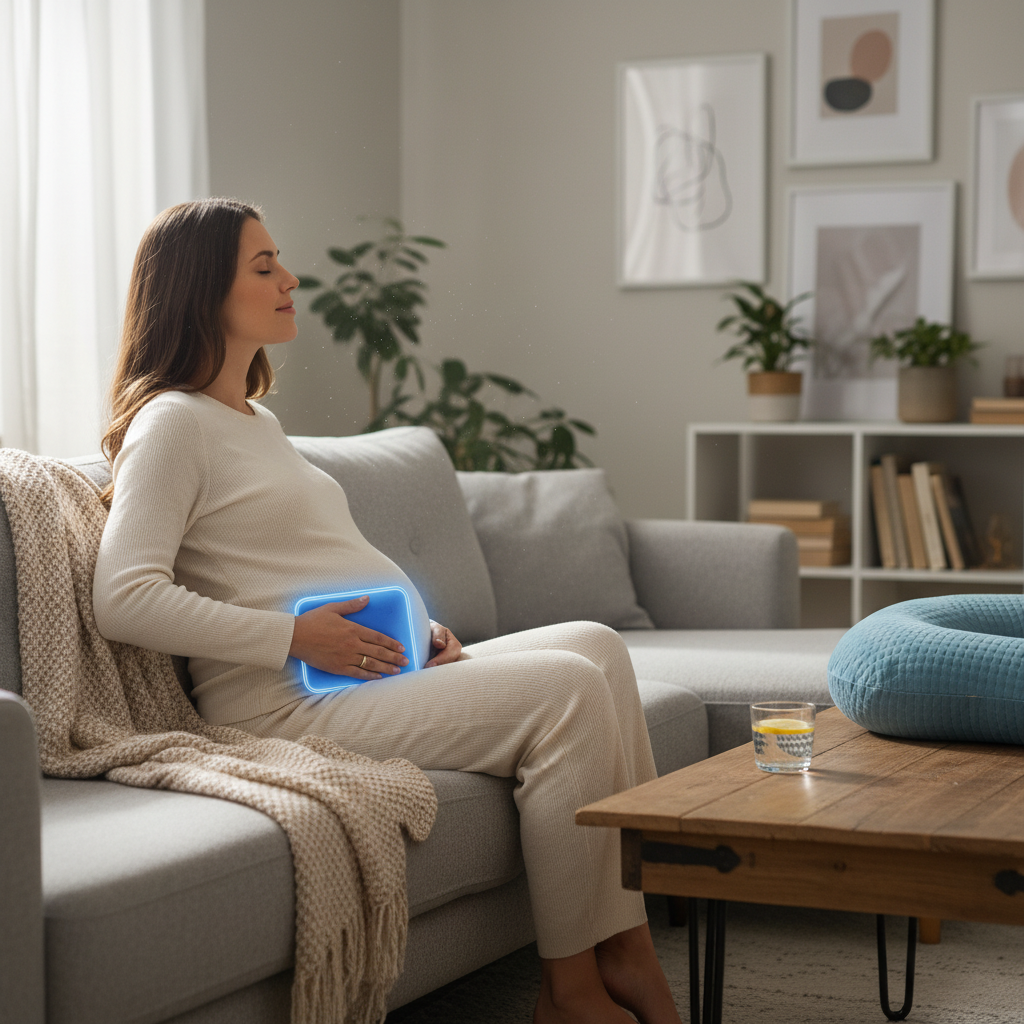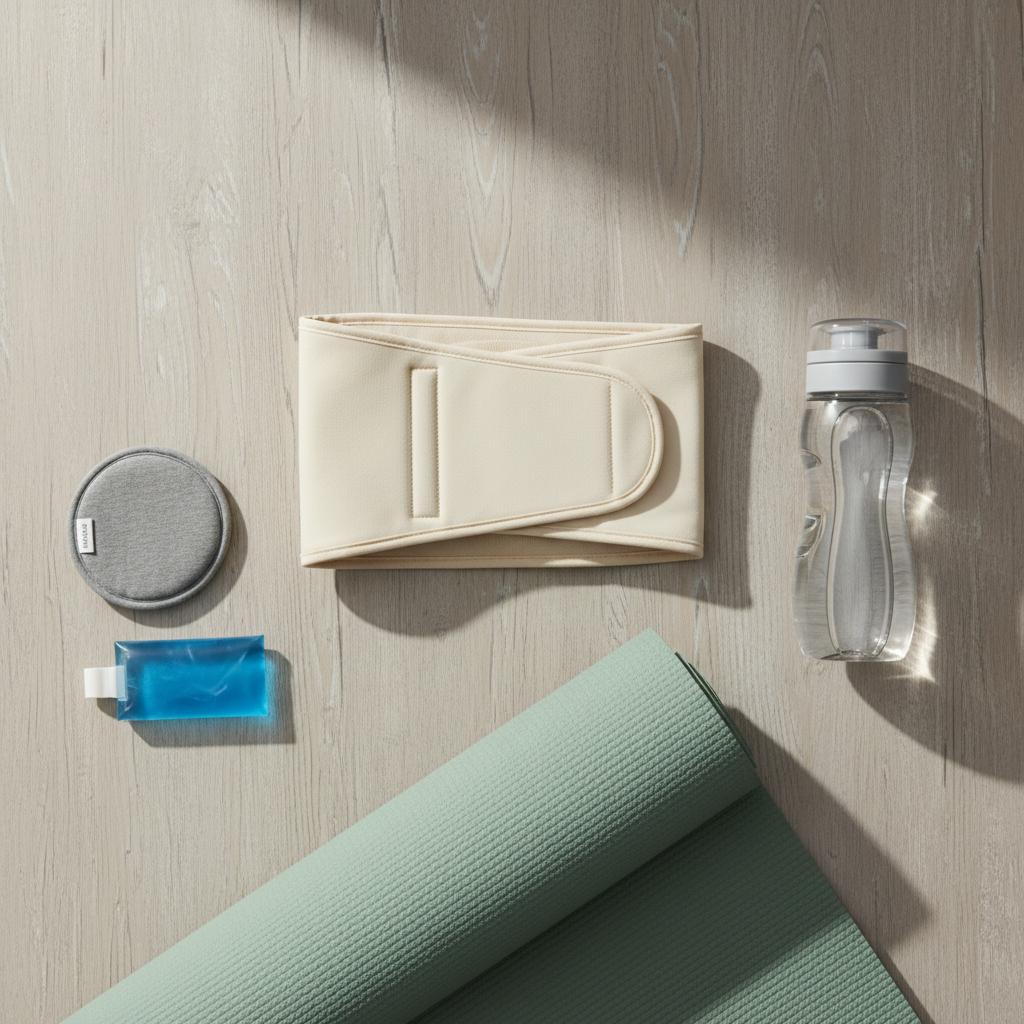
Pregnancy-Safe Ways to Relieve Back and Hip Pain
Back and hip pain are common companions during pregnancy, affecting approximately 40% of expectant mothers as their bodies change to accommodate a growing baby. These discomforts, which often intensify during the second trimester, result from hormonal changes, weight gain, and the shifting of your center of gravity.
Key Highlights
Here are effective ways to manage back and hip pain safely during pregnancy:
- Heat therapy (low setting, 10-15 minutes) and cold compresses can provide immediate relief
- Gentle exercises like prenatal yoga and swimming strengthen supporting muscles
- Proper sleeping positions using supportive pillows reduce nighttime discomfort
- Correct posture and body mechanics prevent additional strain
- Alternative therapies like prenatal massage and acupuncture offer complementary relief options
Understanding Changes: Hormones and Weight Distribution

During pregnancy, your body releases a hormone called relaxin, which loosens ligaments and joints to prepare for childbirth. This necessary change, combined with your growing belly, creates the perfect storm for back and hip discomfort. Your center of gravity shifts forward as your pregnancy progresses, causing your posture to change and putting additional strain on your lower back muscles.
The average woman gains between 25-35 pounds during pregnancy, with much of this weight concentrated in the abdominal area. This uneven distribution places pressure on your spine, pelvis, and supporting muscles, particularly noticeable during the 2nd month pregnancy and beyond. The American College of Obstetricians and Gynecologists notes that these physiological changes explain why so many pregnant women experience back pain, but importantly, there are numerous safe ways to find relief.
Understanding Changes: Common Pain Patterns
Different types of pain may develop as your pregnancy advances. Round ligament pain—characterized by sharp groin or lower abdomen discomfort—occurs when the ligaments supporting your uterus stretch. Sciatica, another common complaint, happens when the sciatic nerve becomes compressed, causing shooting pain down the buttocks and legs.
Pelvic girdle pain affects the joints at the front and back of your pelvis, making everyday movements like walking or climbing stairs uncomfortable. According to research in the Journal of Physical Therapy Science, about half of all pregnant women experience some form of pelvic girdle pain. Understanding which type of discomfort you’re experiencing helps determine the most effective relief strategies for your specific situation.
Your Body & Baby: Immediate Relief Strategies

When pain strikes suddenly, several safe options can provide quick relief. Warm compresses (not hot) applied to sore areas for 10-15 minutes can help relax tense muscles and improve circulation. Cold therapy works well for inflammation—try a wrapped ice pack for 10-15 minutes, particularly if you’re experiencing sciatic pain or muscle spasms.
Maternity support bands or belts can offer immediate stability by lifting your belly slightly and taking pressure off your lower back and pelvis. These supportive garments are especially helpful during standing activities or longer walks. For nighttime comfort, sleeping positions that accommodate your changing body are essential—try lying on your left side with a pillow between your knees to maintain proper spinal alignment.
Your Body & Baby: Movement as Medicine
Despite what might seem counterintuitive, gentle movement often relieves pregnancy-related back and hip pain better than rest alone. Water exercises are ideal because they provide resistance without gravity’s effects—the buoyancy supports your body weight while allowing you to strengthen key muscles. The Mayo Clinic recommends swimming and water aerobics as particularly beneficial for pregnant women experiencing musculoskeletal discomfort.
Prenatal yoga helps maintain flexibility and strengthens core muscles that support your changing body. Simple poses like cat-cow, gentle pelvic tilts, and the butterfly stretch target the specific muscles that stabilize your back and pelvis. Walking maintains overall fitness and improves circulation without excessive impact. For those experiencing more severe pain, modifying your regular workout routine becomes essential for staying active while protecting your joints.
Healthy Living Tips: Posture and Daily Activities

Proper posture plays a crucial role in preventing and managing back pain during pregnancy. When sitting, use a lumbar support pillow to maintain the natural curve in your lower back, and keep your feet flat on the floor. While standing, distribute your weight evenly between both feet, and avoid locking your knees. Consider wearing shoes with good arch support and low, stable heels to minimize strain on your back.
Everyday activities require extra attention during pregnancy. When lifting objects (even light ones), bend at the knees rather than the waist, and avoid twisting motions. Break up long periods of sitting or standing with short walks or gentle stretches. If you’re experiencing pregnancy headaches second trimester discomfort alongside back pain, these posture adjustments may help address both issues by reducing tension throughout your spine and neck.
Healthy Living Tips: Alternative Therapies and Medical Support
Several complementary therapies offer relief when traditional methods aren’t enough. Prenatal massage from therapists certified in pregnancy massage techniques can safely address muscle tension and improve circulation. Many women find acupuncture helpful for back pain—a 2015 study in Obstetrics & Gynecology showed significant pain reduction in pregnant women receiving acupuncture compared to standard care.
For medication options, acetaminophen (Tylenol) is generally considered safe in recommended doses during pregnancy, but always consult your healthcare provider first. Avoid NSAIDs like ibuprofen after 20 weeks gestation, as they may cause complications. If your pain is severe or accompanied by other symptoms, don’t hesitate to contact your doctor. Some red flags that warrant immediate medical attention include severe, persistent pain, numbness, weakness, or pain accompanied by vaginal bleeding, fever, or difficulty urinating. For better rest while managing discomfort, improving sleep during the second trimester should be a priority.
Finding Your Pain Relief Plan
Managing back and hip pain during pregnancy often requires a personalized approach combining several strategies—what works for one expectant mother may not work for another. By understanding the causes of your discomfort and exploring various relief options, you can develop an effective plan to make your pregnancy journey more comfortable and enjoyable.
Sources
American College of Obstetricians and Gynecologists – Back Pain During Pregnancy
Mayo Clinic – Pregnancy and exercise: Baby, let’s move!
Obstetrics & Gynecology – Acupuncture for Low Back and Pelvic Pain in Late Pregnancy
Journal of Physical Therapy Science – Pelvic Girdle Pain in Pregnancy
